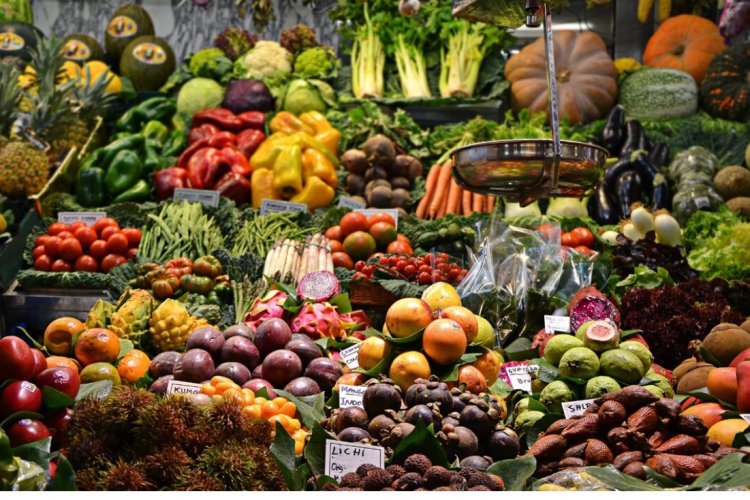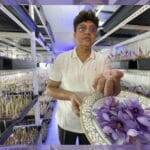Main Points In Hindi (मुख्य बातें – हिंदी में)
यहां FAO द्वारा किए गए अध्ययन के मुख्य बिंदु दिए गए हैं:
-
छिपी हुई लागत का अनुमान: वैश्विक कृषि खाद्य प्रणालियों के भीतर छिपी हुई लागत लगभग 12 ट्रिलियन डॉलर सालाना है, जिसमें से 70 प्रतिशत (8.1 ट्रिलियन डॉलर) अस्वास्थ्यकर आहार पैटर्न और गैर-संचारी रोगों से जुड़ी हैं।
-
अवसर और चुनौतियां: रिपोर्ट विभिन्न प्रकार की कृषि खाद्य प्रणालियों में छिपी हुई लागतों के भिन्नताएं बताती है, जिनमें पारंपरिक से औद्योगिक प्रणालियों में अलग-अलग स्वास्थ्य और पर्यावरणीय जोखिम शामिल हैं।
-
आहार संबंधी जोखिम: अध्ययन में 13 आहार संबंधी जोखिम कारक पहचाने गए हैं, जैसे साबुत अनाज, फल और सब्जियों का अपर्याप्त सेवन, और अत्यधिक सोडियम की खपत, जो विभिन्न कृषि खाद्य प्रणालियों में भिन्न होते हैं।
-
पर्यावरणीय प्रभाव: अस्थिर कृषि पद्धतियों का पर्यावरणीय प्रभाव छिपी हुई लागत में महत्वपूर्ण योगदान करता है, जिसमें ग्रीनहाउस गैस उत्सर्जन और जल प्रदूषण जैसे मुद्दे शामिल हैं।
- सामूहिक कार्रवाई की आवश्यकता: रिपोर्ट में टिकाऊ और समावेशी कृषि खाद्य प्रणालियों के लिए सामूहिक कार्रवाई का आह्वान किया गया है, जिसमें विभिन्न हितधारकों को शामिल करते हुए सामाजिक, स्वास्थ्य, और पर्यावरणीय नीतियों के बीच समन्वय स्थापित करने की आवश्यकता बताई गई है।
Main Points In English(मुख्य बातें – अंग्रेज़ी में)
Here are the main points of the study conducted by FAO regarding hidden costs in global agricultural food systems:


-
Hidden Costs of Agricultural Food Systems: The study involving 156 countries reveals that the hidden costs within global agricultural food systems total approximately $12 trillion annually. Of this amount, about 70% (roughly $8.1 trillion) is linked to unhealthy dietary patterns and non-communicable diseases (NCDs) such as heart disease, stroke, and diabetes.
-
Impact of Agricultural Practices: There are significant differences in hidden costs based on the type of agricultural food systems in place. Industrial agricultural systems in upper-middle and high-income countries incur higher hidden costs mainly due to health-related issues, followed by environmental costs.
-
Identification of Dietary Risks: The report identifies 13 dietary risk factors associated with various agricultural food systems, highlighting issues such as insufficient intake of whole grains, fruits, and vegetables, excessive sodium consumption, and high consumption of red and processed meats.
-
Environmental and Social Costs: Unsustainable agricultural practices significantly contribute to environmental hidden costs. In countries with diverse agricultural-food systems, these costs can reach approximately $720 billion, with countries facing long-term crises bearing the highest relative environmental costs. Social costs, including poverty and malnutrition, are pronounced in traditional agricultural systems and long-term crisis areas.
- Call for Collective Action: The report emphasizes the need for transformative changes in agricultural food systems to make them more sustainable, inclusive, and efficient. It advocates for a shift in how hidden costs are recognized, moving beyond traditional economic measures like GDP to allow for better-informed decision-making that enhances the social value of food systems. Collective action across all stakeholders, including producers, governments, and consumers, is crucial to achieving sustainable development goals and ensuring a prosperous future for all.
Complete News In Hindi(पूरी खबर – हिंदी में)

156 देशों को शामिल करते हुए एफएओ द्वारा किए गए एक अध्ययन से पुष्टि होती है कि वैश्विक कृषि खाद्य प्रणालियों के भीतर छिपी हुई लागत लगभग 12 ट्रिलियन डॉलर सालाना है। इस आंकड़े में से, लगभग 70 प्रतिशत ($8.1 ट्रिलियन) अस्वास्थ्यकर आहार पैटर्न से उत्पन्न होते हैं और खतरनाक गैर-संचारी रोगों से जुड़े होते हैं।
संयुक्त राष्ट्र के खाद्य और कृषि संगठन (एफएओ) द्वारा 156 देशों को शामिल करते हुए एक अध्ययन इस बात की पुष्टि करता है कि वैश्विक कृषि खाद्य प्रणालियों के भीतर छिपी लागत लगभग 12 ट्रिलियन डॉलर सालाना है। इस आंकड़े में से, लगभग 70 प्रतिशत ($8.1 ट्रिलियन) अस्वास्थ्यकर आहार पैटर्न से उत्पन्न होते हैं और हृदय रोग, स्ट्रोक और मधुमेह जैसी खतरनाक गैर-संचारी बीमारियों (एनसीडी) से जुड़े होते हैं, जो पर्यावरणीय गिरावट और सामाजिक असमानताओं से संबंधित लागत से कहीं अधिक है।
खाद्य और कृषि राज्य 2024 (एसओएफए), और भी अधिक गहन विश्लेषण प्रदान करने के लिए 2023 संस्करण पर आधारित है, जिसमें खाद्य उत्पादन, वितरण और उपभोग से जुड़ी लागतों और लाभों की पूरी श्रृंखला को उजागर करने के लिए वास्तविक लागत लेखांकन का उपयोग किया जाता है। वे जो बाजार की कीमतों में प्रतिबिंबित नहीं होते हैं – तथाकथित “छिपी हुई लागत और लाभ”। रिपोर्ट उन लागत अनुमानों को अद्यतन करती है, उन्हें कृषि खाद्य प्रणाली के प्रकारों से विभाजित करती है, और हमारे कृषि खाद्य प्रणालियों में परिवर्तनकारी परिवर्तन के लिए एक पाठ्यक्रम तैयार करती है।
अध्ययन में बताया गया है कि ऊपरी-मध्यम और उच्च आय वाले देशों में अधिक औद्योगिक कृषि खाद्य प्रणालियों में वैश्विक छिपी हुई लागतें बड़े पैमाने पर स्वास्थ्य छिपी लागतों से प्रेरित होती हैं, इसके बाद पर्यावरणीय छिपी लागतें होती हैं।
स्वास्थ्य प्रभावों की जांच में, रिपोर्ट 13 आहार संबंधी जोखिम कारकों की पहचान करती है। इनमें साबुत अनाज, फल और सब्जियों का अपर्याप्त सेवन शामिल है; अत्यधिक सोडियम की खपत; और लाल और प्रसंस्कृत मांस का अधिक सेवन, विभिन्न कृषि खाद्य प्रणालियों में उल्लेखनीय अंतर के साथ।
छिपी हुई लागत कृषि खाद्य प्रणालियों के प्रकार के आधार पर भिन्न होती है
ऐतिहासिक रूप से, कृषि खाद्य प्रणालियाँ पारंपरिक से औद्योगिक में परिवर्तित हो गई हैं, प्रत्येक के अलग-अलग परिणाम और छिपी हुई लागतें हैं। इस कारण से, रिपोर्ट यह पता लगाती है कि दुनिया भर में विभिन्न कृषि खाद्य प्रणाली प्रकारों में छिपी हुई लागतें कैसे प्रकट होती हैं।
विश्लेषण को सुविधाजनक बनाने के लिए, अनुसंधान एक टाइपोलॉजी प्रस्तुत करता है जो कृषि खाद्य प्रणालियों को छह अलग-अलग समूहों में वर्गीकृत करता है: दीर्घकालिक संकट, पारंपरिक, विस्तार, विविधीकरण, औपचारिक और औद्योगिक। यह ढांचा प्रत्येक प्रणाली में निहित अद्वितीय चुनौतियों और अवसरों की लक्षित समझ की अनुमति देता है, जिससे अनुरूप नीतियों और हस्तक्षेपों के विकास को सक्षम किया जा सकता है।
उदाहरण के लिए, जबकि अधिकांश कृषि खाद्य प्रणालियों में साबुत अनाज की कम मात्रा वाला आहार प्रमुख आहार जोखिम कारक है, दीर्घकालिक संकट प्रणालियों (जो लंबे समय तक संघर्ष, अस्थिरता और व्यापक खाद्य असुरक्षा का सामना कर रहे हैं) और पारंपरिक प्रणालियों (कम उत्पादकता, सीमित प्रौद्योगिकी अपनाने की विशेषता) में, और छोटी मूल्य श्रृंखलाएं), प्राथमिक चिंता फलों और सब्जियों का कम सेवन है।
उच्च सोडियम सेवन एक और महत्वपूर्ण चिंता का विषय है, जैसे-जैसे कृषि खाद्य प्रणालियाँ पारंपरिक से औपचारिकीकरण की ओर विकसित होती हैं, बाद में चरम पर पहुँचती हैं और फिर औद्योगिक प्रणालियों में घटती जाती हैं, यह ऊपर की ओर प्रवृत्ति प्रदर्शित करती है। इसके विपरीत, पारंपरिक से औद्योगिक प्रणालियों में संक्रमण के दौरान प्रसंस्कृत और लाल मांस की उच्च खपत लगातार बढ़ रही है, जहां यह शीर्ष तीन आहार जोखिमों में से एक है।
अस्थिर कृषि पद्धतियों का पर्यावरणीय प्रभाव
आहार संबंधी जोखिमों के अलावा, अस्थिर कृषि पद्धतियों का पर्यावरणीय प्रभाव छिपी हुई लागत के बोझ में महत्वपूर्ण योगदान देता है। विविध कृषि-खाद्य प्रणालियों वाले देशों में ग्रीनहाउस गैस उत्सर्जन, नाइट्रोजन अपवाह, भूमि-उपयोग परिवर्तन और जल प्रदूषण से जुड़ी लागत विशेष रूप से अधिक है – जहां तेजी से आर्थिक विकास के साथ-साथ खपत और उत्पादन पैटर्न विकसित होते हैं – अनुमानित $ 720 बिलियन तक पहुंच जाते हैं। औपचारिकीकरण और औद्योगिक कृषि खाद्य प्रणालियों को भी महत्वपूर्ण पर्यावरणीय लागतों का सामना करना पड़ता है। हालाँकि, लंबे समय तक संकट का सामना करने वाले देशों को सबसे अधिक सापेक्ष पर्यावरणीय लागत वहन करनी पड़ती है, जो उनके सकल घरेलू उत्पाद के 20 प्रतिशत के बराबर है।
गरीबी और अल्पपोषण सहित सामाजिक लागतें, पारंपरिक कृषि-खाद्य प्रणालियों और दीर्घकालिक संकटों से प्रभावित लोगों में सबसे अधिक प्रचलित हैं। ये सामाजिक लागतें क्रमशः सकल घरेलू उत्पाद का 8 और 18 प्रतिशत दर्शाती हैं, जो बेहतर आजीविका और एकीकृत मानवीय, विकास और शांति निर्माण प्रयासों की तत्काल आवश्यकता पर प्रकाश डालती हैं।
SOFA 2024 स्थानीय संदर्भों को अपनाने और हितधारक प्राथमिकताओं को पकड़ने के महत्व को रेखांकित करता है। इसे ऑस्ट्रेलिया, ब्राज़ील, कोलंबिया, इथियोपिया, भारत और यूनाइटेड किंगडम सहित विभिन्न देशों और कृषि खाद्य प्रणाली प्रकारों का प्रतिनिधित्व करने वाले केस अध्ययनों के माध्यम से चित्रित किया गया है।
सामूहिक कार्रवाई का आह्वान
कुल मिलाकर, रिपोर्ट कृषि खाद्य प्रणालियों को अधिक टिकाऊ, लचीला, समावेशी और कुशल बनाने के लिए मूल्य-संचालित परिवर्तन का आह्वान करती है। इसके लिए छिपी हुई लागतों को पहचानने के लिए वास्तविक लागत लेखांकन का उपयोग करके जीडीपी जैसे पारंपरिक आर्थिक उपायों से परे जाने की आवश्यकता है। इस दृष्टिकोण के साथ, निर्णयकर्ता अधिक सूचित विकल्प चुन सकते हैं जो खाद्य सुरक्षा, पोषण, जैव विविधता संरक्षण और सांस्कृतिक पहचान में उनकी आवश्यक भूमिकाओं को स्वीकार करते हुए कृषि खाद्य प्रणालियों के सामाजिक मूल्य को बढ़ाते हैं। इस परिवर्तन को प्राप्त करने के लिए क्षेत्रीय विभाजनों को पाटना, स्वास्थ्य, कृषि और पर्यावरण में नीतियों को संरेखित करना और यह सुनिश्चित करना भी आवश्यक है कि लाभ और लागत सभी हितधारकों के बीच समान रूप से साझा किए जाएं।
”अब हम जो विकल्प चुनते हैं, जो प्राथमिकताएं हम तय करते हैं और जो समाधान हम लागू करते हैं, वे हमारे साझा भविष्य को निर्धारित करेंगे। वास्तविक परिवर्तन व्यक्तिगत कार्यों और पहलों से शुरू होता है, जो सक्षम नीतियों और लक्षित निवेशों द्वारा समर्थित होते हैं। वैश्विक कृषि खाद्य प्रणालियों का परिवर्तन एसडीजी को प्राप्त करने और सभी के लिए समृद्ध भविष्य सुरक्षित करने के लिए मौलिक है, ”एफएओ के महानिदेशक क्यूयू डोंगयु ने कहा।
रिपोर्ट इस बात पर जोर देती है कि इस परिवर्तन के लिए सामूहिक कार्रवाई की आवश्यकता है, जिसमें प्राथमिक उत्पादक, कृषि व्यवसाय, सरकारें, वित्तीय संस्थान, अंतर्राष्ट्रीय संगठन और उपभोक्ता शामिल हों। जबकि छिपी हुई लागतों को संबोधित करने से हितधारकों, देशों और समय-सीमाओं पर असमान प्रभाव पड़ेगा, सहायक नीतियां और नियम स्थायी प्रथाओं को शीघ्र अपनाने और कमजोर सामाजिक समूहों की रक्षा करके, विशेष रूप से छोटे पैमाने के उत्पादकों और कृषि व्यवसायों के लिए व्यवधानों को कम करने में मदद कर सकते हैं।
Complete News In English(पूरी खबर – अंग्रेज़ी में)



A study by the FAO covering 156 countries confirms that hidden costs within global agricultural food systems amount to nearly $12 trillion annually. Of this figure, about 70% ($8.1 trillion) results from unhealthy dietary patterns and is linked to dangerous non-communicable diseases.
The United Nations Food and Agriculture Organization (FAO) has conducted a study involving 156 countries, revealing that the hidden costs within global agricultural food systems reach approximately $12 trillion each year. Out of this amount, around 70% ($8.1 trillion) arises from unhealthy eating habits associated with serious non-communicable diseases (NCDs) like heart disease, stroke, and diabetes, surpassing costs related to environmental decline and social inequalities.
The “State of Food and Agriculture 2024” (SOFA) builds upon the 2023 edition for deeper analysis, utilizing actual cost accounting to reveal the full range of costs and benefits linked to food production, distribution, and consumption. This includes costs that are not reflected in market prices—termed “hidden costs and benefits.” The report updates cost estimates, categorizes them by types of agricultural food systems, and sets a pathway for transformative changes in our food systems.
The study indicates that in upper-middle and high-income countries, hidden costs in highly industrialized agricultural food systems are largely driven by health-related hidden costs, followed by environmental hidden costs.
In examining health implications, the report identifies 13 dietary risk factors, such as inadequate consumption of whole grains, fruits, and vegetables; excessive sodium intake; and high consumption of red and processed meats, with significant variations across different agricultural food systems.
Hidden costs vary by agricultural food system type
Historically, agricultural food systems have shifted from traditional to industrial forms, each producing different results and hidden costs. Consequently, the report explores how hidden costs manifest across various types of global agricultural food systems.
To facilitate analysis, the research introduces a typology categorizing agricultural food systems into six distinct groups: long-term crisis, traditional, expansion, diversification, formal, and industrial. This framework allows for a targeted understanding of unique challenges and opportunities within each system, enabling the development of appropriate policies and interventions.
For instance, while a low intake of whole grains is the primary dietary risk factor in most agricultural food systems, in long-term crisis systems (facing prolonged struggles and food insecurity) and traditional systems (characterized by lower productivity and limited technology adoption), a lack of fruit and vegetable consumption is the major concern.
High sodium intake is another significant issue; as agricultural food systems evolve from traditional to formalization, it peaks and then declines in industrial systems. Conversely, during the transition from traditional to industrial systems, the consumption of processed and red meats consistently rises, ranking among the top three dietary risks.
The environmental impact of unsustainable agricultural practices
In addition to dietary risks, the environmental impact of unsustainable agricultural practices significantly contributes to the burden of hidden costs. Countries with diverse agricultural-food systems face higher costs linked to greenhouse gas emissions, nitrogen runoff, land-use changes, and water pollution—projected to reach about $720 billion, especially where economic growth rapidly alters consumption and production patterns. Industrial agricultural food systems also incur substantial environmental costs. However, countries experiencing long-term crises bear the highest relative environmental costs, equivalent to 20% of their GDP.
Social costs, including poverty and malnutrition, are most prevalent among those affected by traditional agricultural food systems and long-term crises. These social costs represent 8% and 18% of GDP, respectively, highlighting the urgent need for improved livelihoods and integrated humanitarian, development, and peacebuilding efforts.
SOFA 2024 emphasizes the importance of adapting to local contexts and capturing stakeholder priorities. This is illustrated through case studies representing various countries and types of agricultural food systems, including Australia, Brazil, Colombia, Ethiopia, India, and the United Kingdom.
A call for collective action
Overall, the report calls for value-driven changes to make agricultural food systems more sustainable, resilient, inclusive, and efficient. This requires moving beyond traditional economic measures like GDP to include actual cost accounting, which recognizes hidden costs. By adopting this approach, decision-makers can make informed choices that promote food security, nutrition, biodiversity conservation, and respect for cultural identity, enhancing the social value of agricultural food systems. To achieve this transformation, it is also essential to bridge regional divides, align policies in health, agriculture, and the environment, and ensure that benefits and costs are equitably shared among all stakeholders.
“The choices we make now, the priorities we set, and the solutions we implement will determine our shared future. Real change starts with individual actions and initiatives supported by enabling policies and targeted investments. Transforming global agricultural food systems is fundamental to achieving the SDGs and securing a prosperous future for all,” said FAO Director-General QU Dongyu.
The report emphasizes that collective action is necessary for this transformation, involving primary producers, agribusinesses, governments, financial institutions, international organizations, and consumers. While addressing hidden costs may have uneven impacts across stakeholders, countries, and timelines, supportive policies and regulations can facilitate the rapid adoption of sustainable practices and help mitigate disruptions, especially for vulnerable social groups like smallholder producers and agribusinesses.




